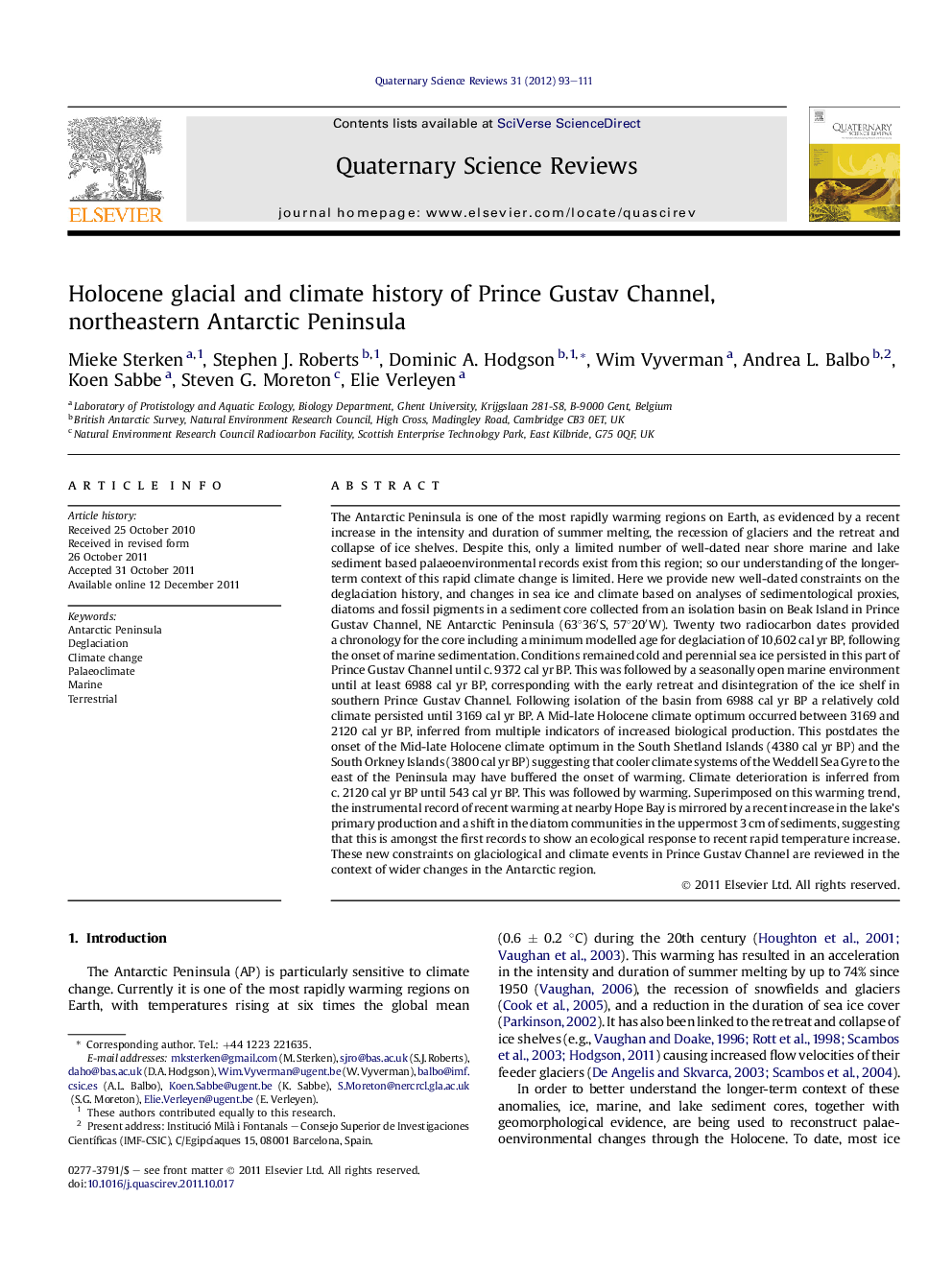| کد مقاله | کد نشریه | سال انتشار | مقاله انگلیسی | نسخه تمام متن |
|---|---|---|---|---|
| 4735509 | 1640903 | 2012 | 19 صفحه PDF | دانلود رایگان |

The Antarctic Peninsula is one of the most rapidly warming regions on Earth, as evidenced by a recent increase in the intensity and duration of summer melting, the recession of glaciers and the retreat and collapse of ice shelves. Despite this, only a limited number of well-dated near shore marine and lake sediment based palaeoenvironmental records exist from this region; so our understanding of the longer-term context of this rapid climate change is limited. Here we provide new well-dated constraints on the deglaciation history, and changes in sea ice and climate based on analyses of sedimentological proxies, diatoms and fossil pigments in a sediment core collected from an isolation basin on Beak Island in Prince Gustav Channel, NE Antarctic Peninsula (63°36′S, 57°20′W). Twenty two radiocarbon dates provided a chronology for the core including a minimum modelled age for deglaciation of 10,602 cal yr BP, following the onset of marine sedimentation. Conditions remained cold and perennial sea ice persisted in this part of Prince Gustav Channel until c. 9372 cal yr BP. This was followed by a seasonally open marine environment until at least 6988 cal yr BP, corresponding with the early retreat and disintegration of the ice shelf in southern Prince Gustav Channel. Following isolation of the basin from 6988 cal yr BP a relatively cold climate persisted until 3169 cal yr BP. A Mid-late Holocene climate optimum occurred between 3169 and 2120 cal yr BP, inferred from multiple indicators of increased biological production. This postdates the onset of the Mid-late Holocene climate optimum in the South Shetland Islands (4380 cal yr BP) and the South Orkney Islands (3800 cal yr BP) suggesting that cooler climate systems of the Weddell Sea Gyre to the east of the Peninsula may have buffered the onset of warming. Climate deterioration is inferred from c. 2120 cal yr BP until 543 cal yr BP. This was followed by warming. Superimposed on this warming trend, the instrumental record of recent warming at nearby Hope Bay is mirrored by a recent increase in the lake’s primary production and a shift in the diatom communities in the uppermost 3 cm of sediments, suggesting that this is amongst the first records to show an ecological response to recent rapid temperature increase. These new constraints on glaciological and climate events in Prince Gustav Channel are reviewed in the context of wider changes in the Antarctic region.
► The deglaciation and climate history of Prince Gustav Channel are described.
► Deglaciation occurred at c. 10,602 cal yr BP.
► Changes in marine and terrestrial environments were detected by multiple proxies.
► Chronological control included 22 radiocarbon dates in an age-depth model.
► A recent increase in lake primary production is linked to present climate warming.
Journal: Quaternary Science Reviews - Volume 31, 12 January 2012, Pages 93–111